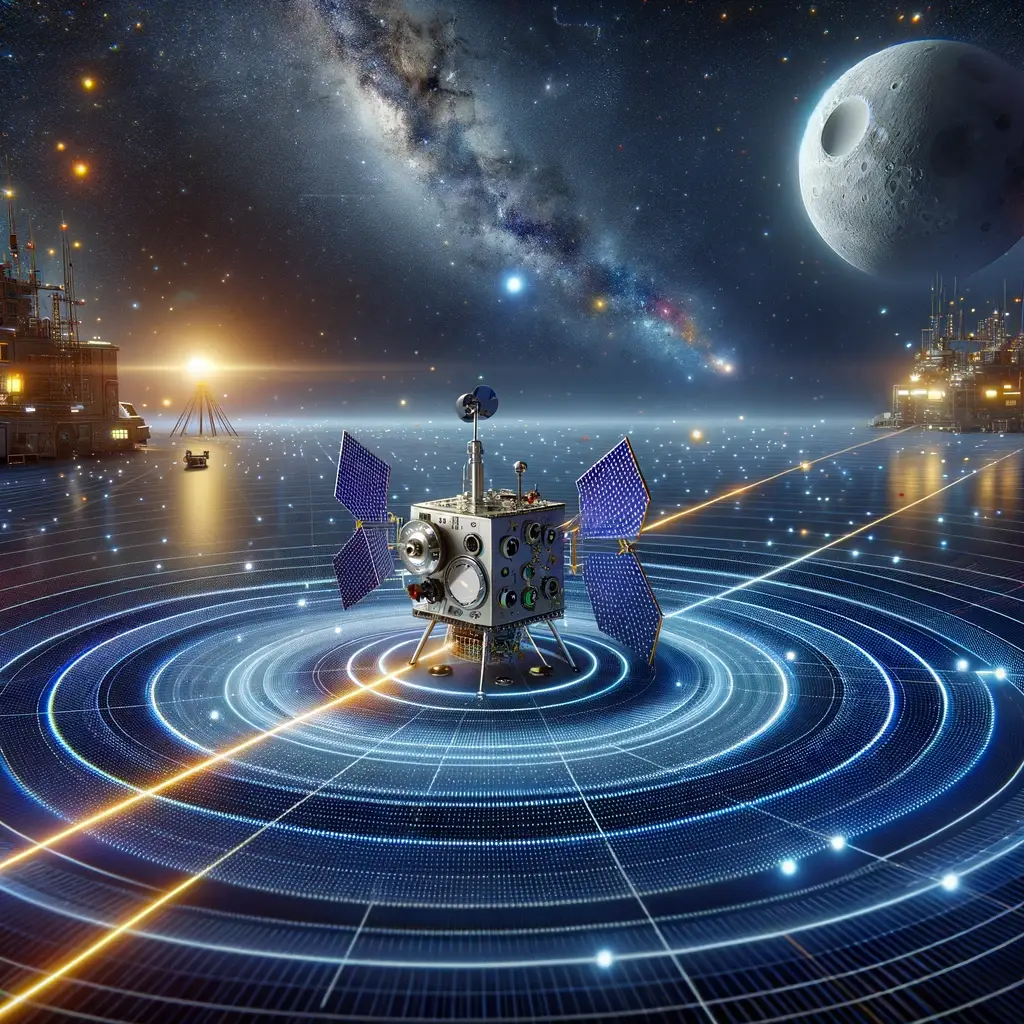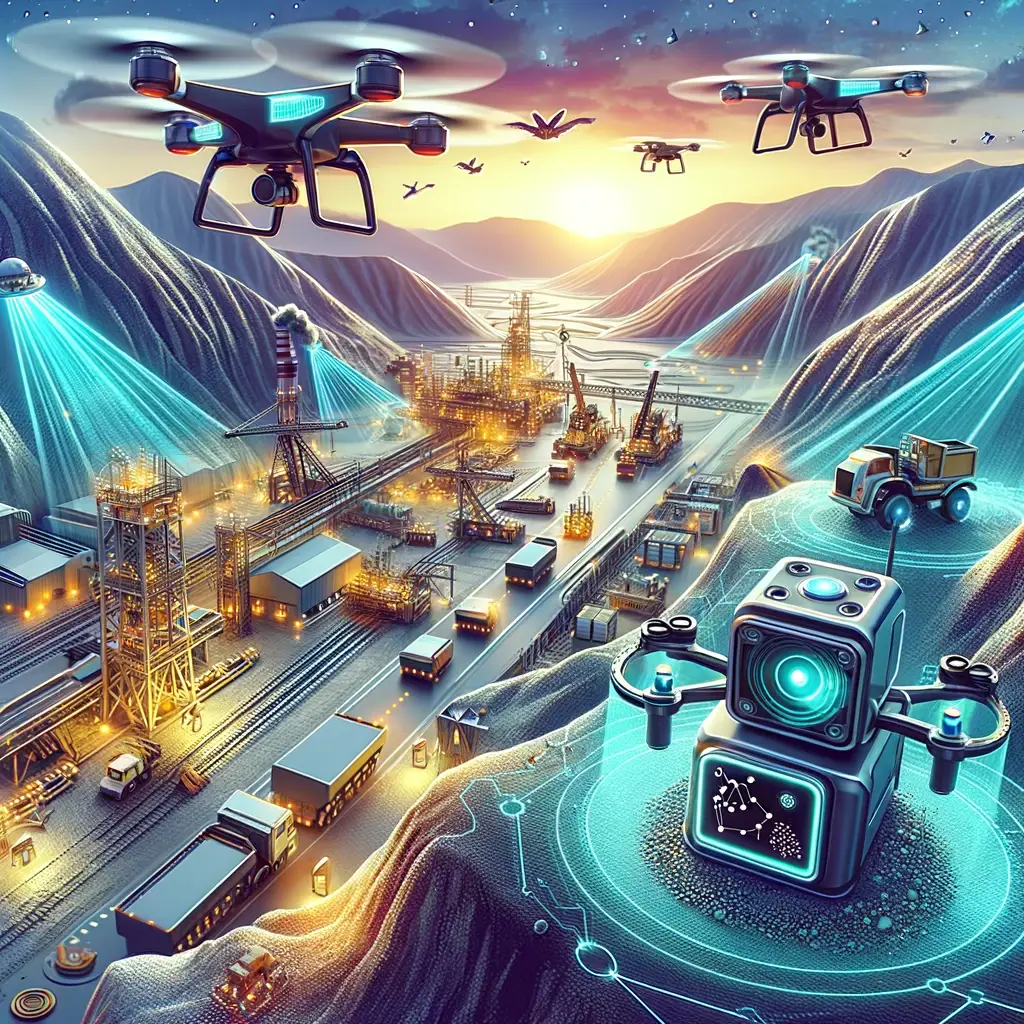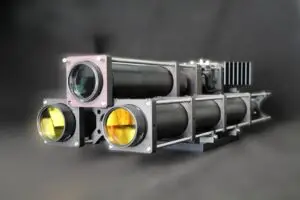The photonics revolution is transforming various industries with its innovative applications in light-based technologies. Here’s a deeper look into some of the exciting developments:
Photonics in Agriculture: Photonics technology has shown potential in agricultural applications like determining the ripeness of fruits. This involves using drones equipped with photonic chips to detect the absorption of mid-infrared light by gases emitted from ripe fruits. These advanced chips are smaller, cheaper, and more accurate than current technologies, enabling precise harvesting timing without damaging the fruit trees.
Expanding beyond fruit ripeness detection, photonics in agriculture is also transforming other critical aspects of farming. Advanced photonic sensors are being used for precision irrigation and pest management, where they assess plant health and soil moisture levels with remarkable accuracy. This enables farmers to apply water and pest control measures more efficiently, reducing resource use and environmental impact. Additionally, photonic technology is instrumental in enhancing crop yields through controlled-environment agriculture. Here, LED lighting tailored to specific light spectra promotes optimal plant growth, ensuring higher yields even in areas with adverse climate conditions or limited natural light. The versatility and scalability of photonics in agriculture signify a move towards more sustainable and technologically advanced farming practices, capable of meeting the increasing global food demand while conserving natural resources.

High-Speed Internet through Photonics: In the realm of telecommunications, photonics is making strides by enabling extremely high-speed internet. Researchers have developed a fingernail-sized optical micro-comb chip capable of delivering record-breaking data speeds of 44.2 Terabits per second. This advancement could significantly enhance global internet infrastructure, accommodating the growing demands of industries like medicine, education, finance, and e-commerce.
Photonics is revolutionizing high-speed internet by leveraging the power of light to transmit data at unprecedented speeds, a vital advancement given the growing global demand for fast and reliable connectivity. Central to this innovation are photonic chips, like optical micro-combs, which enable dramatically increased data transfer rates compared to traditional electronic transmissions. This leap in technology is not only enhancing user experiences with faster downloads and streaming but is also crucial for supporting the massive data demands of emerging technologies such as 5G networks, cloud computing, and the Internet of Things (IoT). As research progresses, we can anticipate further advancements in photonics, making high-speed internet more accessible and paving the way for revolutionary connectivity options like quantum communication networks.

Advanced Navigation Systems: Photonic technology is also being applied in navigation systems, particularly in space exploration. There’s ongoing work on compact, intelligent spacecraft that utilize photonics for navigating through space, aiming for missions to the moon, Mars, and beyond. This includes the development of optical gyroscopes using photonic chips, which are sensitive enough to measure tiny differences in movement based on Albert Einstein’s theory of relativity, thus enabling precise inertial navigation.
Further enhancing the capabilities of advanced navigation systems, photonics is playing a crucial role in developing highly accurate and reliable communication networks for space missions. With the implementation of laser communication systems, spacecraft can transmit large volumes of data back to Earth at speeds much higher than conventional radio frequency systems. This high-speed data transmission is essential for deep space exploration, where timely and detailed data transfer is crucial for mission success. Additionally, photonics-based sensors are being explored for their potential in environmental monitoring and hazard detection in space, providing critical information for spacecraft navigation and crew safety. These advancements in photonics not only promise greater efficiency and precision in space exploration but also open up possibilities for more ambitious missions, including manned expeditions to distant planets and moons, underlining the transformative impact of photonics in the realm of space travel and exploration.

Enhancing Manufacturing with Lasers: In the manufacturing sector, photonics is revolutionizing production processes through laser technology. This includes applications in the automotive industry, photovoltaic cell production, and semiconductor manufacturing. The use of industrial laser technologies is stimulating new processes that promise high quality, mass customization, and flexible production on demand.
Beyond these industries, the influence of laser photonics extends to the fields of aerospace, biomedicine, and consumer electronics, where precision and efficiency are paramount. In aerospace manufacturing, lasers are used for cutting and welding complex components, ensuring high-strength joins essential for aircraft and spacecraft. In the biomedical field, laser photonics facilitates the production of intricate medical devices and implants with unmatched accuracy, greatly enhancing patient outcomes. Consumer electronics benefit from the miniaturization of components, made possible by the precise and controlled laser fabrication processes. The versatility of laser photonics in manufacturing not only drives innovation in product design and quality but also supports environmental sustainability. Laser-based processes often result in reduced waste and lower energy consumption compared to traditional manufacturing methods, aligning with the growing emphasis on green manufacturing practices. This ongoing integration of photonics in diverse manufacturing sectors underscores its role as a foundational technology for modern industrial innovation and sustainability.

Improving Mining Operations: In the mining industry, hyperspectral technologies are proving instrumental. They provide accurate mapping, surveying, and monitoring of geological formations, thus optimizing exploration efforts and reducing extraction costs. These advancements are not only improving resource management but also reducing environmental impact and enhancing worker safety.
The application of photonics in mining extends to real-time ore analysis and mineral processing as well. Using laser-induced breakdown spectroscopy and other photonic techniques, mining operations can rapidly and accurately determine the composition of ore directly at the mining site. This immediate feedback allows for more efficient sorting and processing of materials, leading to significant reductions in energy consumption and processing time. Furthermore, the implementation of photonic sensors in monitoring the structural integrity of mines enhances safety protocols, providing early warnings against potential collapses or hazardous conditions. This proactive approach to safety, powered by photonics, not only protects workers but also minimizes downtime due to accidents or equipment failures. The integration of these photonic technologies is paving the way for a more sustainable, efficient, and safer mining industry, demonstrating the transformative impact of photonics across yet another critical sector of the global economy.

Photonics in Data Storage and Sensing: Photonics is playing a critical role in data storage and sensing technologies. It has enabled the development of advanced imaging and quantum sensing techniques, pushing the limits of resolution, sensitivity, and accuracy, see more about NV Centers. These include applications in gravitational wave detection, magnetic field sensing, and the development of atomic clocks.
In the realm of data storage, photonics is revolutionizing the way information is stored and accessed, offering solutions to the increasing demands for high-capacity, high-speed storage systems. Leveraging the principles of holography and optical data storage, photonic technologies enable the storage of vast amounts of data in multi-dimensional formats, far surpassing the capabilities of traditional magnetic and electronic storage methods. This advancement is crucial in the era of big data, where the efficient storage and retrieval of large datasets are vital. Additionally, in the field of sensing, photonics is instrumental in the development of highly sensitive biosensors and environmental sensors. These sensors utilize light-based detection mechanisms to identify and measure biological or chemical substances at extremely low concentrations, facilitating early detection in healthcare diagnostics and environmental monitoring. The continued advancement in photonics for data storage and sensing is not only enhancing technological capabilities across various sectors but is also contributing to the development of smarter, more responsive systems in areas ranging from healthcare to environmental science.

Each of these developments showcases the vast potential and impact of photonics across various sectors, underlining its role in driving future technological advancements. Stay tuned to IZAK Scientific for more insights into the exciting world of photonics and its industrial applications. Join us in exploring the future, illuminated by the science of light.
Reference list
2. https://www.rmit.edu.au/news/all-news/2022/may/photonics
3. https://www.rmit.edu.au/news/all-news/2020/jul/photonics-transforming-tech
4. https://eustartup.news/shaping-the-future-with-photonics-eu-startups-light-the-way/
Tzachi Sabati
CEO, IZAK Scientific
Physicist specializing in photonics and quantum technologies, with deep expertise in quantum sensors and advanced optical systems. Leads the Advanced Quantum Lab course at the Technion, bridging academic excellence with industry innovation. At IZAK Scientific, provides cutting-edge photonics-based solutions, developing customized inspection and sensing systems for R&D and production. Passionate about advancing quantum sensing applications and integrating novel technologies to meet industry needs.



































